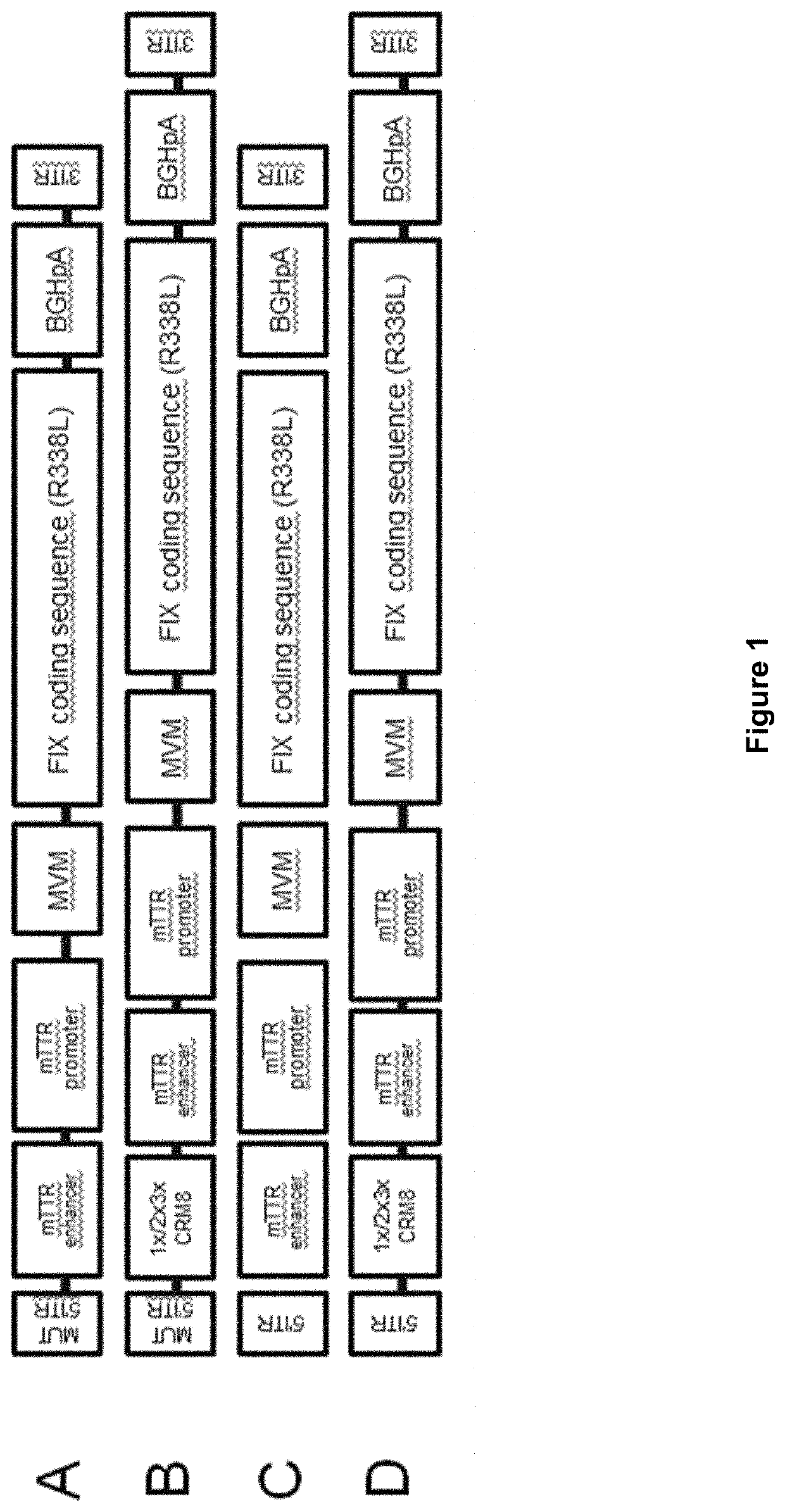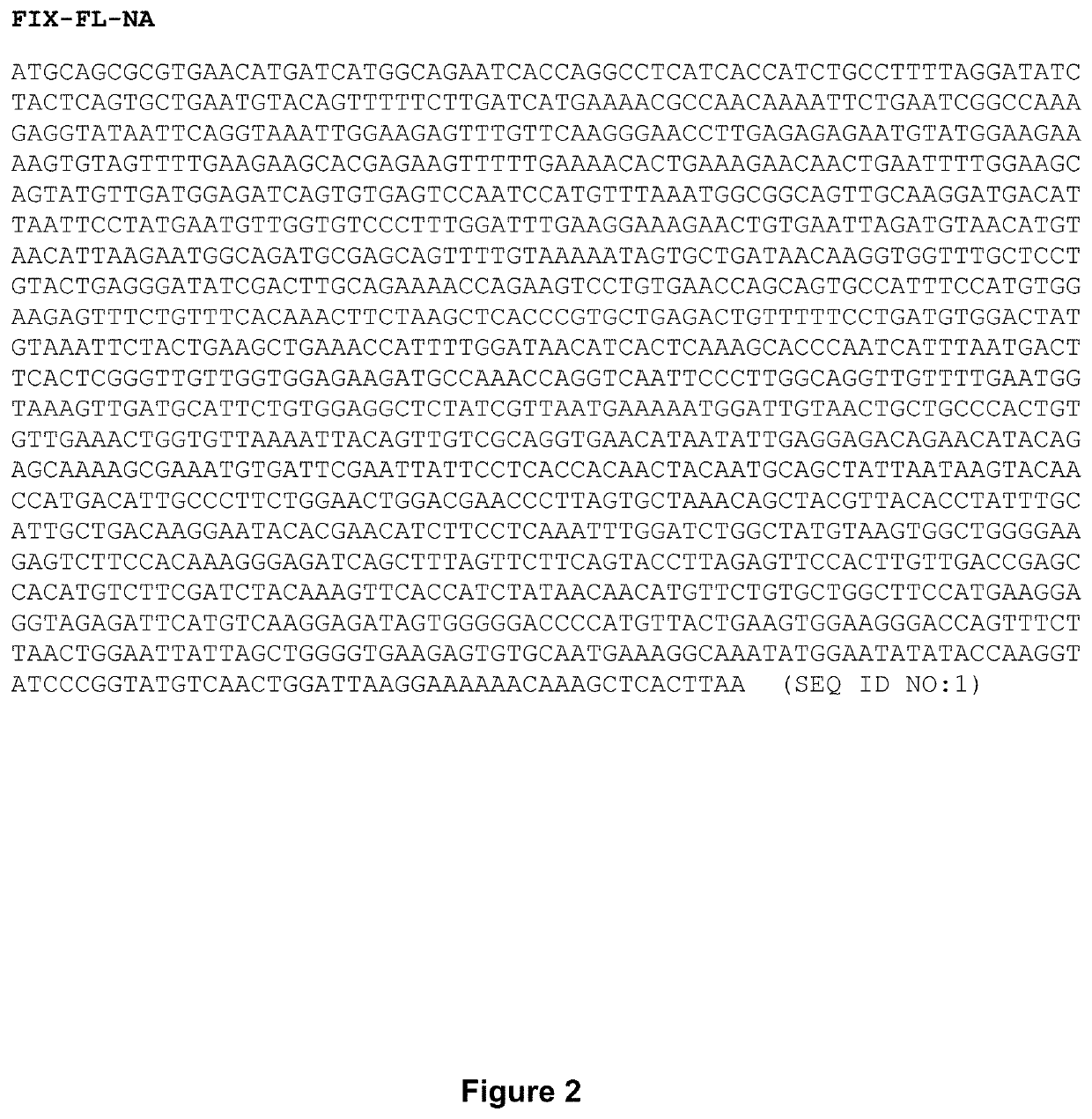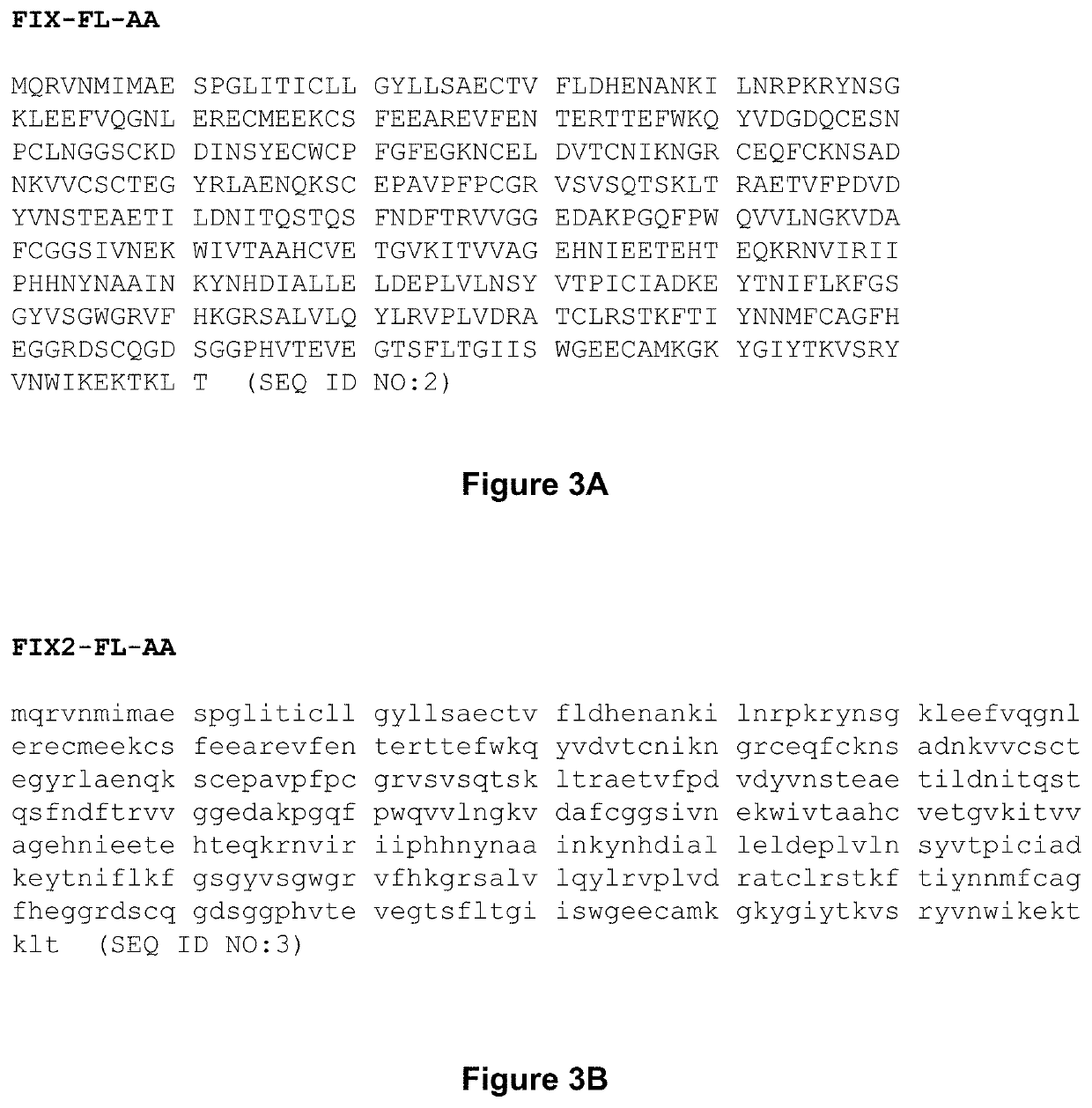Gene therapy of hemophilia b using viral vectors encoding recombinant fix variants with increased expression
a technology of gene therapy and fix variants, applied in the direction of drug compositions, extracellular fluid disorder, peptide/protein ingredients, etc., can solve the problems of unsatisfactory coagulation, undesirable features of factor ix replacement therapy, ix replacement therapy, etc., to improve secretion, improve activity, and improve folding properties
- Summary
- Abstract
- Description
- Claims
- Application Information
AI Technical Summary
Benefits of technology
Problems solved by technology
Method used
Image
Examples
example 1
ered Factor IX Expression Sequences Enhance FIX Expression Levels
[0440]In order to generate gene therapy constructs providing improved expression of heterologous Factor IX in vivo, a panel of self-complementary AAV8-based vectors encoding a full-length Factor IX preproprotein with an R384L amino acid substitution (FIXp-FL-AA SEQ ID NO:4)) were constructed. The Factor IX coding sequence of each construct was altered to improve expression in humans through several steps. Each Factor IX coding sequence was modified according to an algorithm designed to account for preferred / disfavored sequence motifs and to skew codon-usage towards preferred human codons. Several algorithms were used for this first step, as reported in Table 2. Intermediate codon-altered sequences, resulting from application of the algorithms reported in Table 2, where then further modified manually to reduce or eliminate CpG dinucleotides, adjust the final GC content, adjust to allow for preferred codon pairs, adjust ...
example 2
cific CRM8 Elements Enhance Expression of FIX in Mice
[0447]To further increase Factor IX expression and activity from the codon-altered constructs, one to three copies of a liver-specific cis-regulatory control element (CRM8 (SEQ ID NO:39)), as reported in Nair et al., Blood 123:3195-99 (2014) was incorporated into the gene cassette, creating the construct diagramed in FIG. 1B. AAV vectors harboring the CS02 codon-altered FIX coding sequence with zero (CS02-CRM8.0-V), one (CS02-CRM8.1-V), two (CS02-CRM8.2-V), or three (CS02-CRM8.3-V) CRM8 control elements were injected into wild-type mice by the tail vein route. Human FIX antigen in mouse plasma was then measured over time with a human FIX-specific ELISA assay.
[0448]As reported in Table 3, use of CRM8 regulatory elements increased Factor IX expression in vivo by about 2-fold and 4-fold, as compared to expression from the control construct lacking a CRM8 element, 21-days post infection. For example, the CS02-CRM8.1-V vector, containi...
example 3
cific CRM8 Elements Enhance Expression of FIX in Human Hepatic Cells
[0449]The CS02 Factor IX gene therapy constructs containing 0-3 copies of the CRM8 liver-specific regulatory control element, as described in Example 2, were further tested by in vitro biopotency assays performed with the human hepatic cell line HepG2. Briefly, HepG2 cells were infected with one of the CS02-CRM8-V AAV vectors, as described in Example 2, and FIX activity was measured by a chromogenic substrate assay three days after infection. Consistent with the results reported in Example, 2, all vectors containing a CRM8 regulatory control element provided higher FIX expression, as reported in Table 4. Striking, the effect of using multiple CRM8 elements was even more pronounced in the human HepG2 cells than in the mouse model. For example, vectors containing 2 copies of the CRM8 element provided 6.7-fold expression and vectors containing 3 copies of the CRM8 element provided 12.8-fold expression, relative to the ...
PUM
 Login to View More
Login to View More Abstract
Description
Claims
Application Information
 Login to View More
Login to View More - R&D
- Intellectual Property
- Life Sciences
- Materials
- Tech Scout
- Unparalleled Data Quality
- Higher Quality Content
- 60% Fewer Hallucinations
Browse by: Latest US Patents, China's latest patents, Technical Efficacy Thesaurus, Application Domain, Technology Topic, Popular Technical Reports.
© 2025 PatSnap. All rights reserved.Legal|Privacy policy|Modern Slavery Act Transparency Statement|Sitemap|About US| Contact US: help@patsnap.com



